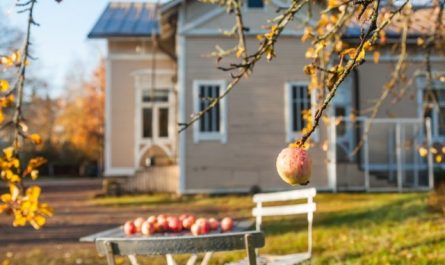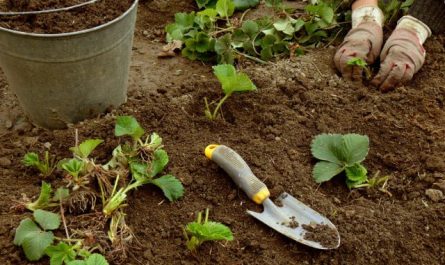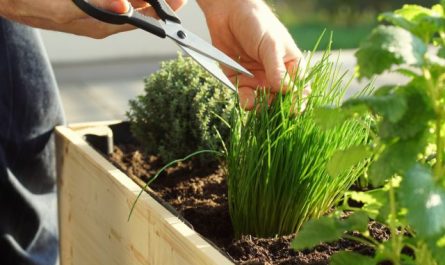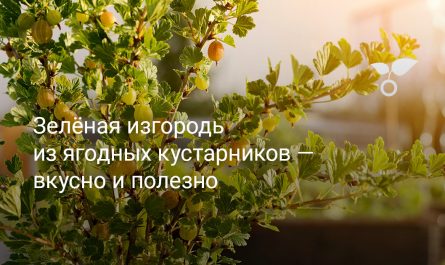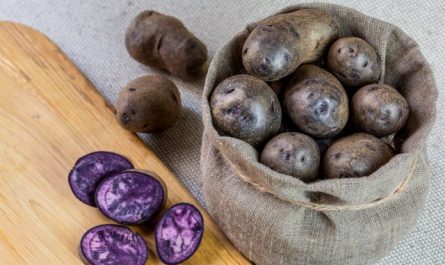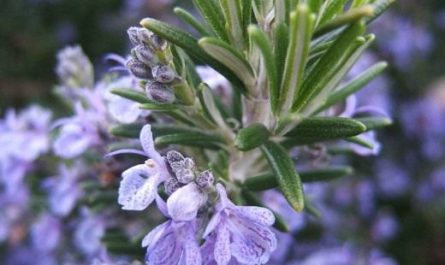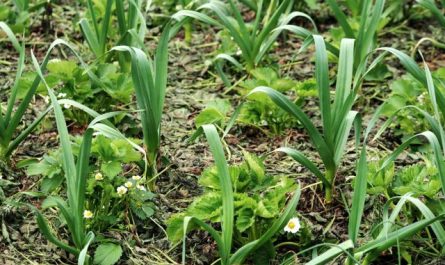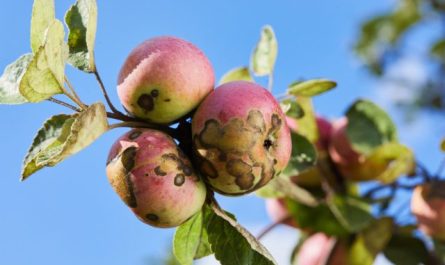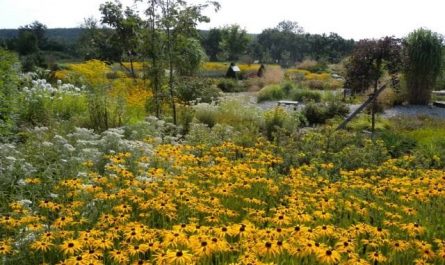Aphids are one of the most dangerous garden pests, spreading across the garden with astonishing speed. Even a week of delay in control measures can cost the harvest and weaken your favorite crops in the vegetable garden, orchard and ornamental garden. There are plants that are more resistant to aphids, and there are their true favorites, which are very difficult to avoid when the pest appears on the site. Aphids always cause special damage to berry bushes. And the fight against the ubiquitous aphids on currants, gooseberries, etc. is considered very difficult for good reason.

Why are aphids dangerous on berry bushes?
Aphids are one of the most common insect pests that feed on plant sap. Several hundred species of aphids plague gardeners at the height of the season. Aphids are especially active during flowering, but in warm weather, plants are not immune to aphids at all stages of vegetation. The ability to lay up to 50 clutches in one summer and the speed of spread to neighboring plants leave no time to delay measures to combat aphids.
It is easy to spot aphids on plants: greenish, brownish or black, small insects up to 7 mm with a characteristic proboscis create entire colonies on the back of young leaves, the tops of shoots and buds, they are clearly visible to the naked eye. Aphids are also given away by honeydew (a sticky coating on plants), the appearance of spots, curling of leaves and rapid drying of unblown buds.
By feeding on sap, causing loss of leaves and buds, and damaging young growth, aphids not only weaken plants or deprive them of a long-awaited harvest, but also create a favorable environment for viruses and fungal diseases. Aphids put weakened bushes at risk of dying both during wintering and from related problems.
5 Berry Bushes That Aphids Love
When compiling your collection of berries, it is worth considering the resistance of varieties to diseases and pests, including aphids. There are simply no completely invulnerable plants; with serious mistakes in care and oversight, even the most resistant cultivars will be affected by it.
But there are some species that even with the best modern varieties and impeccable care are difficult to protect from aphids if they appear on the site. Having settled on any plants – both decorative and vegetable – aphids immediately become a considerable threat to these beloved berry plants.
1. Raspberries
The sweetest berry of the summer, prickly and so special, raspberries require not only careful care, but also special vigilance. Prickly shoots, beautiful pubescent leaves complicate careful inspection, but it is vital. Even varieties advertised as more resilient, without preventive measures, will not be able to avoid the attention of aphids. The probability of damage is more than high even at a significant distance from other infected plants.
The most common aphids on raspberries are leaf and shoot aphids. The insects attack not only the leaves, but also the shoots, and are often not limited to the “young growth”, they spread surprisingly quickly and overwinter well. In addition to the general weakening of the plant, aphids are dangerous because they cause a loss of immunity to viral infections of raspberries.
If young branches start to dry out, it is unlikely that you will be able to save the raspberries. Prevention is the most reliable option, but if aphids have settled on the raspberries, you need to immediately begin treatment with a systemic insecticide, if necessary, refusing to eat the harvest in order to save the bushes.

2. Red currant
Compact, abundantly fruitful even with modest care, amazingly resistant to bad weather, the beauty “porichka”, unfortunately, does not show the desired resistance to aphids. On elegant bushes with straight shoots, insects are clearly visible. Infection is easy to suspect by growths, swellings, deformation of leaves.
This type of currant (like white or pink) is loved by gall aphids. The spread of insects on the bushes inevitably leads to the drying out of young shoots. And usually results in the loss of the next year’s harvest and a long fight against infections.
Red currant bushes need to be carefully examined from the very beginning of green growth until the end of the season. Preventive treatments are effective, but the main secret of fighting aphids and their consequences is the timeliness of measures. And systematicity: after the destruction of the aphids themselves, you need to carefully protect the bushes that have lost their young growth from any adversity.

3. Blackcurrant
The main berry bush and everyone’s favorite, black currant is considered a reliable, hardy and easy-to-grow species. The main secret of success and good yield is timely pruning and at least minimal care. But if black currant is amazingly resistant to diseases, the same cannot be said about pests. Aphids are one of the most dangerous enemies of black currant, threatening not only with poor yields, but also with the death of the plant.
Gall aphid is almost never found on modern varieties of blackcurrant bushes, but gooseberry aphid causes considerable damage to plants. This pest is easy to recognize by its curled upper leaves. Mass loss of greenery and damage to young shoots and tops actually destroys the entire “result” of growth for the season. Weakened bushes do not winter well and do not produce a full harvest for several more years. And the damage to endurance is so great that currants almost always also suffer from viral infections.
On blackcurrants, aphids are easier to prevent. If you remember the need to keep the plantings clean, fight weeds and provide normal care, the risk will decrease. Preventive treatments are also effective. At the first signs of leaf deformation, you should immediately start spraying with protective agents.

4. Gooseberry
The most problematic berry plant, which has become a source of disappointment for many and a real breeding ground for viruses and diseases, gooseberries are not resistant to diseases in principle. This is one of the first species that are at great risk of infection by aphids even with impeccable care.
The most common aphid on gooseberries, as you might guess, is the gooseberry (shoot) aphid, although more than two dozen other types of aphid can “attack” the bushes. Swollen reddened spots, curling of young leaves (into “balls”) and hordes of ants indicate infection. Aphids on gooseberries spread so quickly that even a few days of delay in fighting them can lead to irreparable damage. If the aphid weakens the bush, it will most likely die from viral infections without a chance of salvation.
When it comes to gooseberries, it is worth betting on prevention. Sanitary measures, including pruning together with early spring spraying with any systemic insecticides, are the key to gooseberry health. And if aphids do appear in the garden, you need to continue treating the gooseberries with at least biological preparations throughout the season.

5. Honeysuckle
Once considered almost invulnerable, large-fruited honeysuckle varieties are no longer considered resistant to aphids. Climate change and much warmer winters mean that aphids are spreading more and more actively on this early-harvesting berry. Honeysuckle is threatened by specific types of aphids – honeysuckle spruce, cereal and apical.
It is quite easy to recognize aphids on honeysuckle. Insects prefer young shoots, causing them to stop growing, become deformed, and turn yellow. It is necessary to regularly inspect not only the tops of the shoots, but also the upper leaves.
Preventive treatments on honeysuckles are carried out with systemic insecticides before the buds awaken. Preventive measures are especially relevant for plants that were sick in previous seasons. If the plant was affected by aphids, after harvesting, the bushes should be trimmed, removing all affected shoots.

How to fight aphids on berry bushes?
For all berry bushes, it is advisable to use biological agents and focus on prevention. If aphids do appear, there is an environmentally friendly alternative to conventional insecticides:
- microbiological preparations (Entobacterin, Intra-vir, Fitoverm, Bitoxibacillin, Actofit, etc.);
- herbal infusions (potato tops, yarrow, dandelion, hot pepper, horse sorrel, onion, garlic, tobacco, marigold, mustard), soap solutions and ash infusions.
The use of chemicals (Antitlin, Karbofos, Nitrofen, Kallipso, Proteus, Actellic and other highly specialized or systemic insecticides) should be resorted to in case of serious damage and the ineffectiveness of other measures.
For any medication, it is important to follow the manufacturer’s instructions and safety precautions.
Plants-indicators that help to notice aphids as quickly as possible, and therefore to start fighting them in time, before much damage is done, are spicy herbs. Regular inspection of tarragon, mint, rosemary, lemon balm, chamomile will allow you to notice the first wave of aphids. Aphids especially love tarragon, which is always the first to be infected on the site.
Arugula, mustard, calla and other types of leafy cabbage are among the first to attract aphids. By tracking insects on these indicator plants, you can begin the fight in time and get by with minimal preventive treatment to stop the spread of aphids throughout the entire area.
Do not consider shrubs in a decorative garden less vulnerable to aphids. If aphids have already appeared on the site, and even more so have spread, then they will definitely “spread” to laburnum, roses, cinquefoil, decorative St. John’s wort and beautifully flowering annuals.
